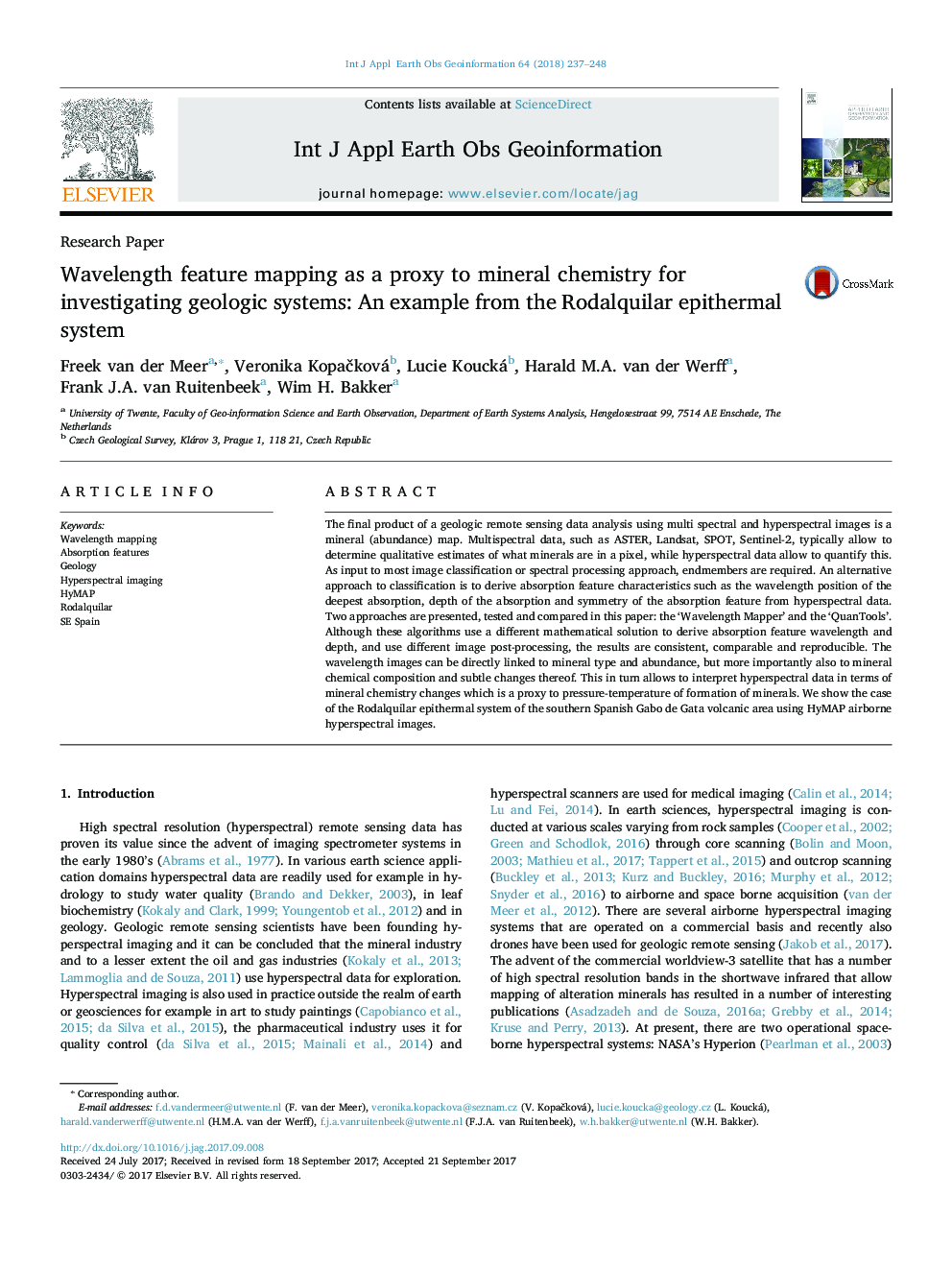| Article ID | Journal | Published Year | Pages | File Type |
|---|---|---|---|---|
| 5755433 | International Journal of Applied Earth Observation and Geoinformation | 2018 | 12 Pages |
Abstract
The final product of a geologic remote sensing data analysis using multi spectral and hyperspectral images is a mineral (abundance) map. Multispectral data, such as ASTER, Landsat, SPOT, Sentinel-2, typically allow to determine qualitative estimates of what minerals are in a pixel, while hyperspectral data allow to quantify this. As input to most image classification or spectral processing approach, endmembers are required. An alternative approach to classification is to derive absorption feature characteristics such as the wavelength position of the deepest absorption, depth of the absorption and symmetry of the absorption feature from hyperspectral data. Two approaches are presented, tested and compared in this paper: the 'Wavelength Mapper' and the 'QuanTools'. Although these algorithms use a different mathematical solution to derive absorption feature wavelength and depth, and use different image post-processing, the results are consistent, comparable and reproducible. The wavelength images can be directly linked to mineral type and abundance, but more importantly also to mineral chemical composition and subtle changes thereof. This in turn allows to interpret hyperspectral data in terms of mineral chemistry changes which is a proxy to pressure-temperature of formation of minerals. We show the case of the Rodalquilar epithermal system of the southern Spanish Gabo de Gata volcanic area using HyMAP airborne hyperspectral images.
Related Topics
Physical Sciences and Engineering
Earth and Planetary Sciences
Computers in Earth Sciences
Authors
Freek van der Meer, Veronika KopaÄková, Lucie Koucká, Harald M.A. van der Werff, Frank J.A. van Ruitenbeek, Wim H. Bakker,
